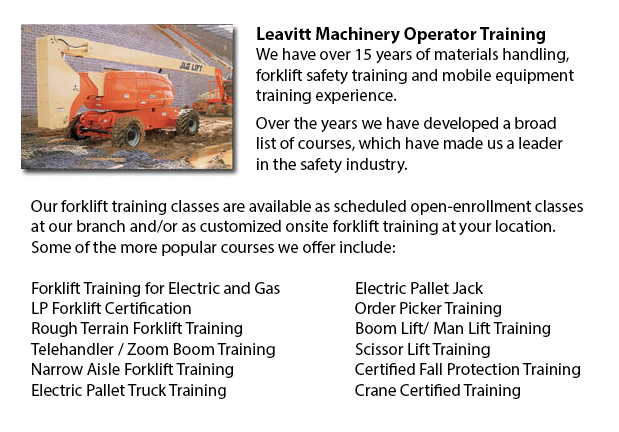
Toronto Boom Lift Safey Training - Boom lifts fall under the kind of elevated work platform or aerial lifting device. Most normally utilized in construction, industry, and warehousing; the boom lift is so versatile that it could be used in almost whichever setting.
Elevated work platforms allow personnel to get into work places that will be inaccessible otherwise. There is inherent risk in the operation of these devices. Workers who operate them need to be trained in the right operating methods. Preventing accidents is vital.
Boom Lift Training Programs include the safety aspects involved in boom lift operation. The program is best for those who operate self-propelled elevated work platforms and self-propelled boom supported elevated work platforms. Upon successful completion of the course, People who participated would be issued a certificate by someone qualified to confirm completing a hands-on assessment.
Industry agencies, federal and local regulators, and lift manufacturers all play a role in providing information and establishing standards in order to help train operators in the safe utilization of elevated work platforms. The most essential ways to prevent accidents related to the utilization of elevated work platforms are the following: performing site assessments; checking machinery; and having on safety gear.
Important safety considerations when operating Boom lifts:
Operators stay away from power line, observing the minimum safe approach distance (or also known as MSAD). Voltage can arc across the air to find an easy path to ground.
So as to maintain stability when the platform nears the ground, a telescopic boom must be retracted before lowering a work platform.
Personnel working from the Boom lift platform should tie off to ensure their safety. Safety harness and lanyard combinations should not be connected to any anchorage other than that provided by the manufacturer, never to other poles or wires. Tying off may or may not be necessary in scissor lifts, which depends on specific job risks, local regulations, or employer guidelines.
Avoid working on a slope that goes beyond the maximum slope rating as specified by the manufacturer. If the slop exceeds requirements, then the machine must be winched or transported over the slope. A grade can be measured with no trouble by laying a minimum 3-feet long straight edge or board on the slope. Next a carpenter's level could be laid on the straight edge and the end raised until it is level. The per-cent slope is attained by measuring the distance to the ground (also referred to as the rise) and dividing the rise by the length of the straight edge. After that multiply by 100.
-
Toronto Wheel Loader Training
Toronto Wheel Loader Training - Normally, the different kinds of heavy equipment training are classed into 2 categories of machinery: those that have rubber tires and tracked vehicles. Tracked vehicles consist of items like for example excavators, cr... More -
Toronto Heavy Equipment Operator Training
Toronto Heavy Equipment Operator Training - Heavy equipment operator training facilities that provide good standards in the business, providing field performance tasks and added machinery training are really sought after training features. Students a... More -
Toronto Manlift Operator Certification
Toronto Manlift Operator Certification - We provide an aerial lift and scissor platform certification and training to empower the trainee with the general understanding and knowledge of the safe and efficient use of "Power Operated Mobile Work Platfo... More -
Toronto Aerial Boom Lift Ticket
Toronto Aerial Boom Lift Ticket - Aerial lifts can be utilized to accomplish a lot of unique duties done in hard to reach aerial spaces. Some of the odd jobs associated with this type of jack include performing regular preservation on structures with... More -
Toronto Heavy Equipment License
Toronto Heavy Equipment License - Obtaining a heavy equipment license is mandatory in order to operate these big industrial machinery. Certification could be acquired through a vocational school or private training. The license would enable the drive... More -
Skid Steer Loader Training in Toronto
A skid-steer loader is an engine powered equipment which consists of a small and rigid frame. It is outfitted together with lift arms that are utilized to connect to a large variety of labor saving tools and attachments. Typically, skid-steer loaders... More -
Toronto Aerial Lift Certification
Toronto Aerial Lift Certification - Aerial Lift Certification is for individuals who requires an in-depth understanding of aerial lift safety. Inspectors and operators, supervisors, maintenance workers and construction craftsmen should perform a cert... More -
Toronto Boom Lift Training
Toronto Boom Lift Training - Elevated work platforms, also called aerial platforms, allow workers to carry out tasks at heights which would otherwise be not reachable. There are different kinds of lifts intended for various site conditions and applic... More

Forklift Certification Toronto
TOLL FREE: 1-888-254-6157
Toronto, Ontario
forkliftcertificationtoronto.com
Email Us
About Us


